On View
After 450 Years in Storage, a Female Renaissance Master’s ‘Last Supper’ Is Finally Unveiled in Florence
Plautilla Nelli's painting is going on view after a four-year restoration.
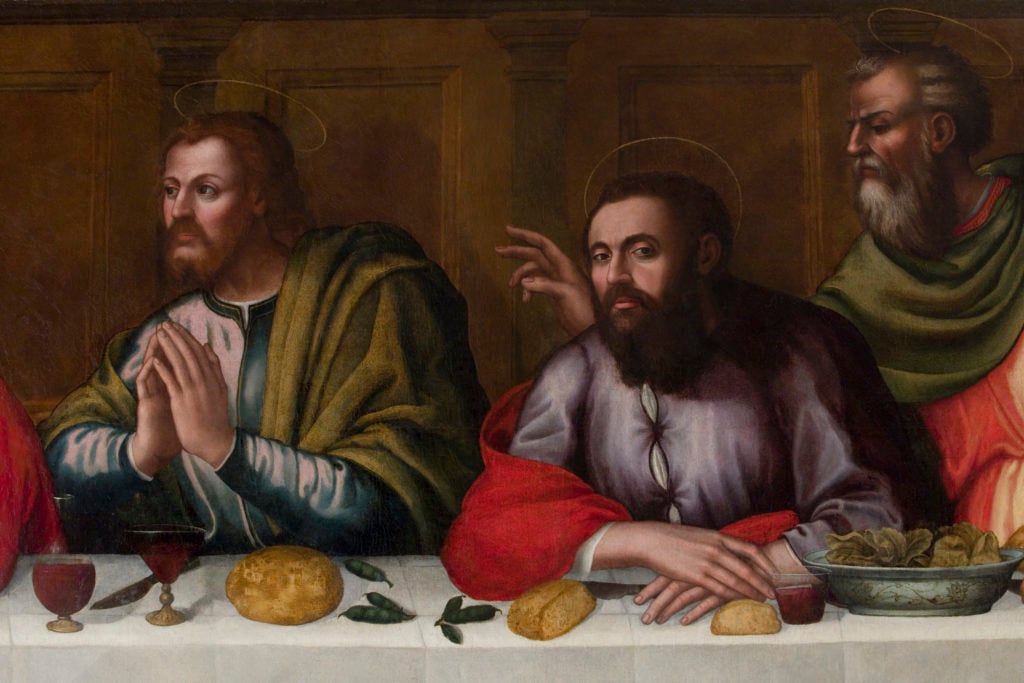
Plautilla Nelli's painting is going on view after a four-year restoration.

Kate Brown

A large-scale painting of the Last Supper by the female Renaissance artist Plautilla Nelli has been hung on permanent display in Florence. The work’s powerful subject matter and expertise execution are finally being highlighted in an art-historical canon dominated by men.
Nelli’s Last Supper had languished in storage before it was pulled out four years ago to undergo restoration, funded with private money and crowdsourcing. The fruits of the conservation effort were revealed today as the 21-foot painting went on permanent display at the Santa Maria Novella Museum refectory in Florence. It stands opposite The Last Supper by Alessandro Allori, a male contemporary of Nelli.
Often described as Florence’s first female artist, the unveiling has been seen by some as poetic justice for anonymous women artists everywhere, particularly amid the flurry of hype around male artists from her epoch. European museums are currently marking the 500-year anniversary of the death of Leonardo da Vinci. During his time and Nelli’s, female artists were barred from going to school and could not study anatomy or the male figure. If female artists still managed work, their art, in many cases, was devalued and fell into disrepair.
The organization Advancing Women Artists, which played a major role in Nelli’s rediscovery and the restoration of her work, has been attempting to uncover other pre-modern woman artists—though Nelli seems to remain the undisputed star. “One will never get closer to an artist than in the restoration studio,” says the head conservator of the project, Rossella Lari. (The entire restoration was spearheaded and carried out by women who are at the helm of the restoration scene in Florence.)
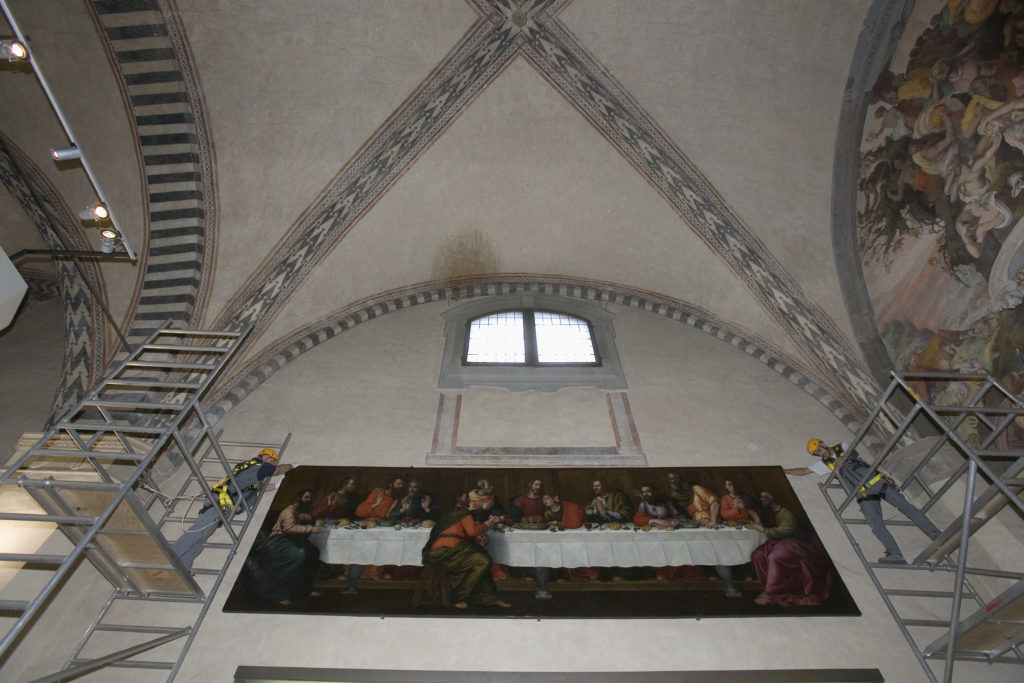
Nelli’s Last Supper on public display. Photo: Rabatti & Domingie.
“We restored the canvas and, while doing so, rediscovered Nelli’s story and her personality. She had powerful brushstrokes and loaded her brushes with paint,” says Lari. “Plautilla knew what she wanted and had control enough of her craft to achieve it.”
Born in 1524, Nelli became a nun and eventually established an all-woman painter workshop at her convent, Santa Caterina di Cafaggio. The nuns sold works to members of the Florentine nobility and, as a result, established economic self-sufficiency.
The oil painting, stored away for 450 years, is the only known work on the penultimate religious scene to be made by a female artist from the Renaissance. It is also one of the largest works by an early female artist. Italian Renaissance biographer Giorgio Vasari, who wrote at length about Leonardo da Vinci, mentioned Nelli in the second edition of his Lives of the Artists in 1568. “She would have done wonderful things if she had only studied as men do,” he wrote.
The signature on the painting reads: “Sister Plautilla – Pray for the Paintress.”
See the work and its restoration, below.

Christ and Saint John, pre-restoration. Photo: Rabatti&Domingie.
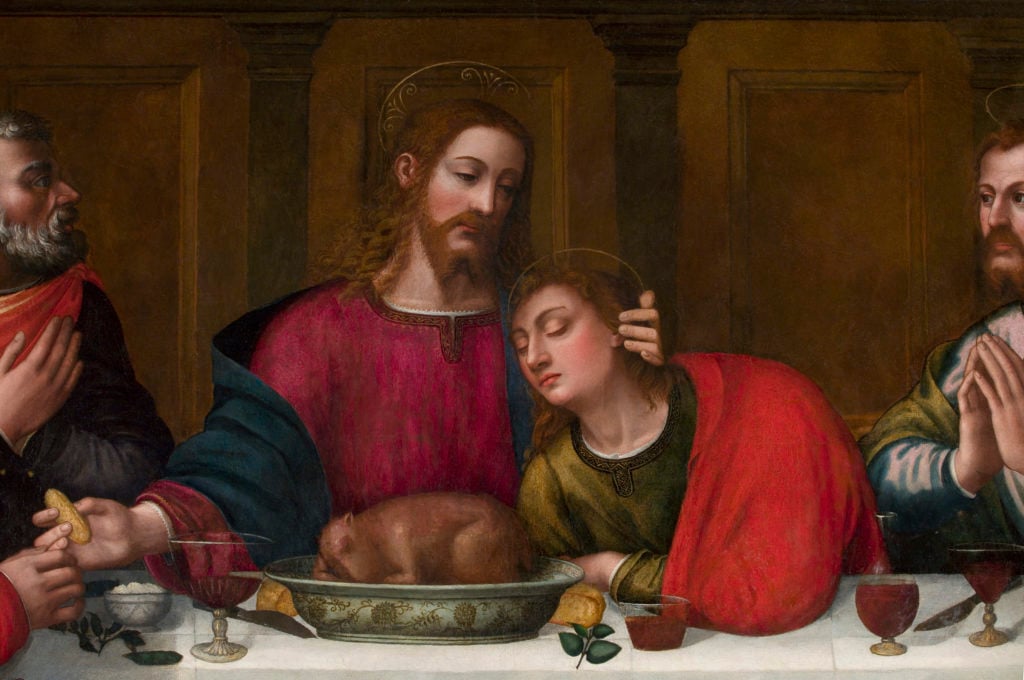
Christ and Saint John, pre-restoration. Photo: Rabatti&Domingie.
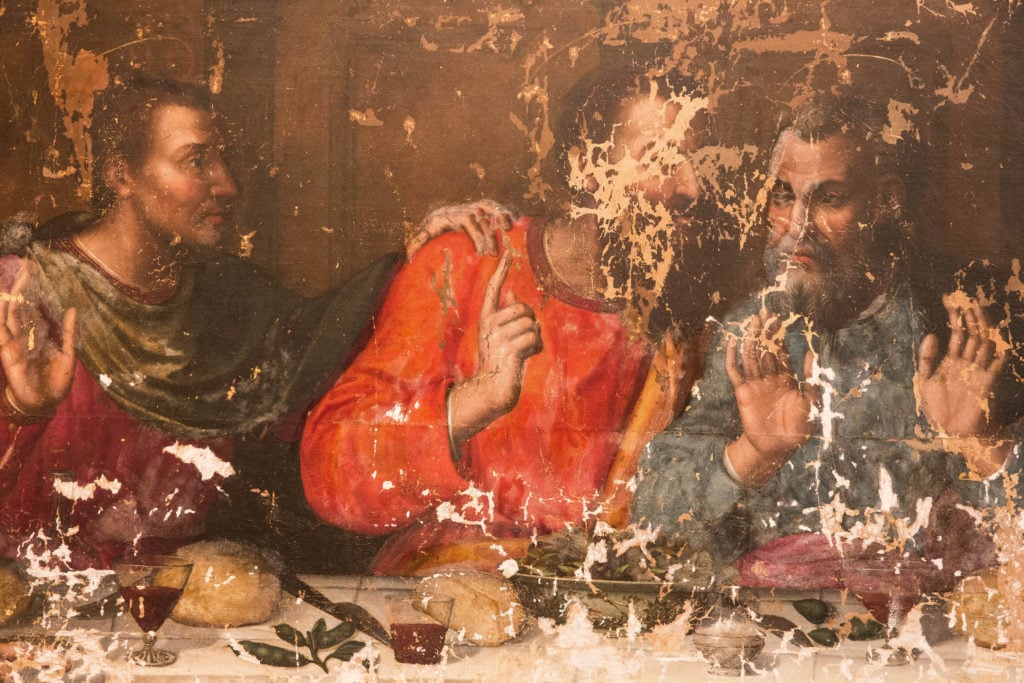
Nelli’s apostles, possibly Thomas and Peter, pre-restoration. Photo: Francesco Cacchiani.
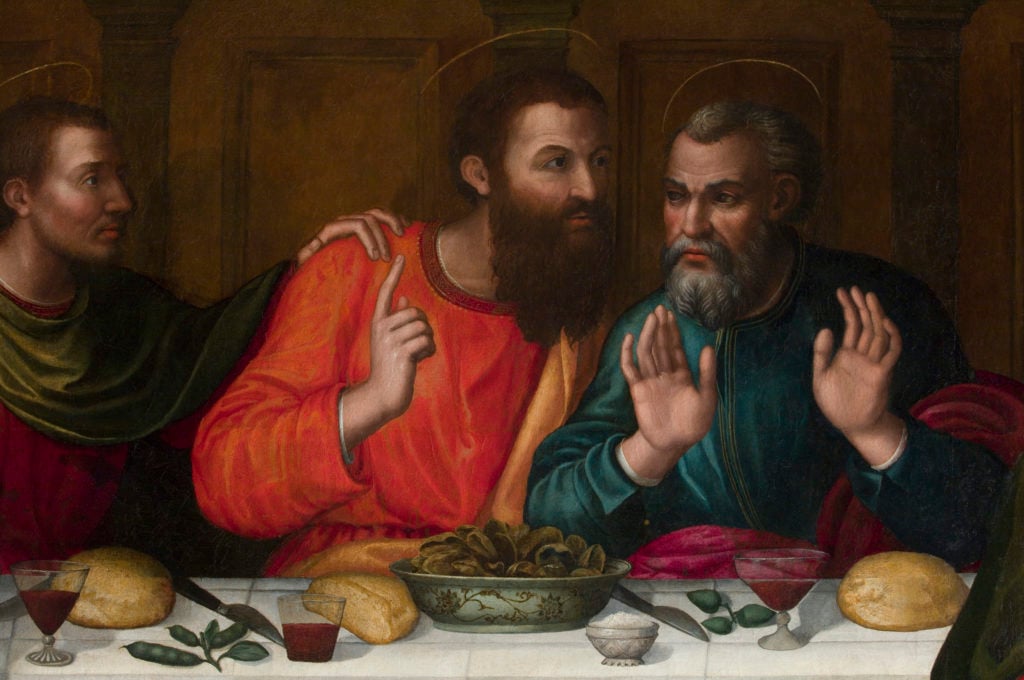
Nelli’s apostles, possibly Thomas and Peter, post-restoration. Photo: Rabatti&Domingie.

Full view of Plautilla Nelli’s The Last Supper, pre-restoration. Photo: Rabatti&Domingie.

Full view of Plautilla Nelli’s The Last Supper, post-restoration. Photo: Rabatti&Domingie.